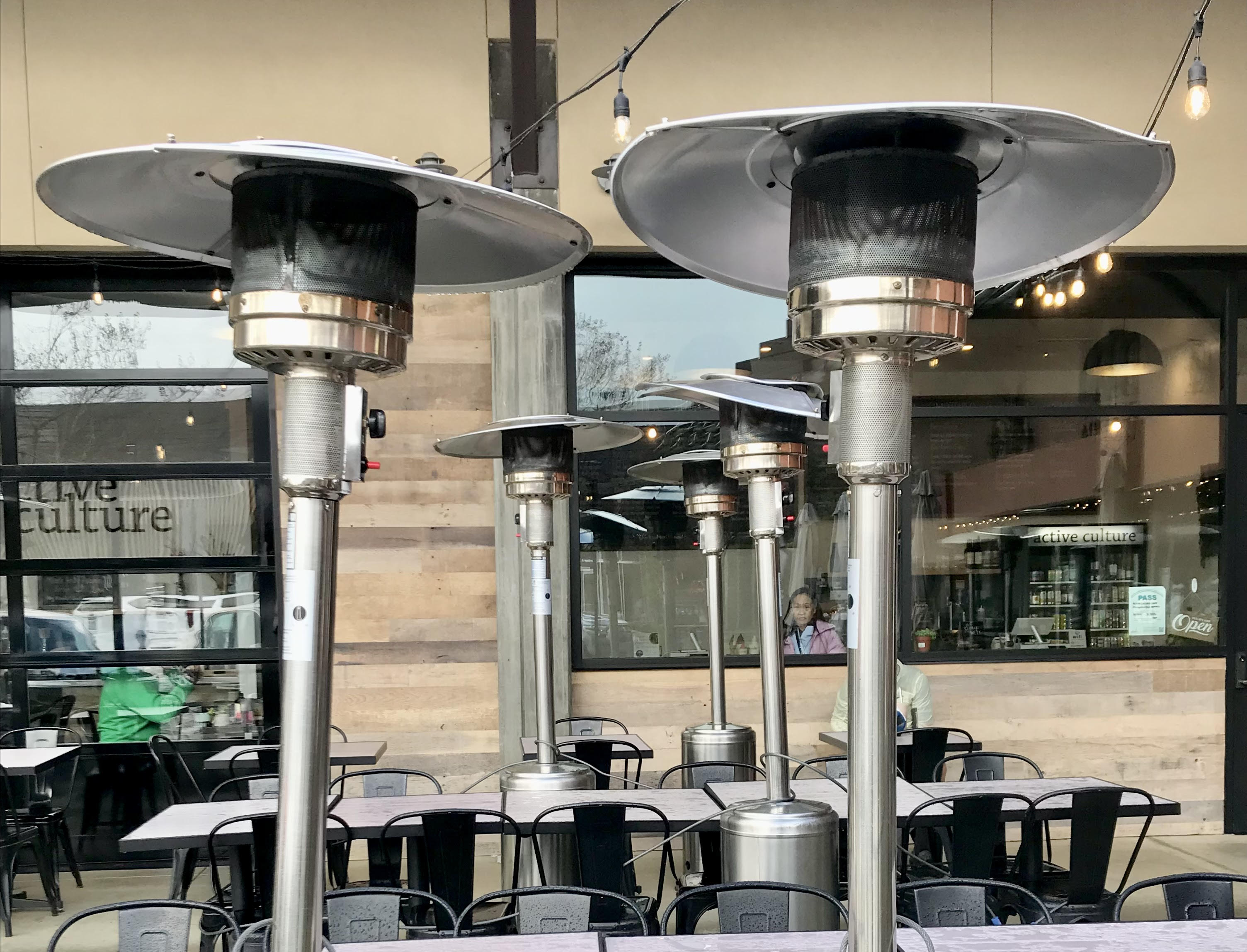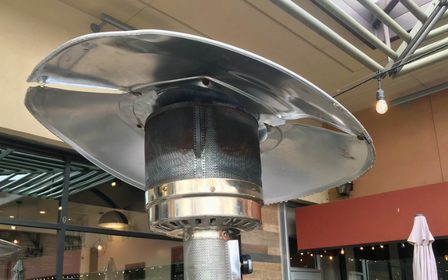How Long Will My Propane Patio Heater Last?
Posted by Alfresco Heating on Apr 27th 2023
The lifespan of your propane patio heater depends on its quality. Consider the following key points when purchasing patio heaters for longevity:
- If the price is cheap, it is also probably cheaply made and designed to potentially last one season of regular use. If you are lucky, you can maybe get two.
- If it has a multi-part reflector (like the ones in the photo) it will be inefficient from day one, and quickly warp, making it even less effective.
- If the flame doesn’t make the emitter glow much, it won’t heat much. If the patio heater is inexpensive, then the thin emitter grid will collapse quickly, creating even less effective heating and more air pollution.
- If the patio heating unit is not base weighted, then it can likely blow over in a light breeze and get damaged.
- If the portable patio heater has a thin or multi-part post, then it will be less stable and more likely to lean.
- If there is no brand on the patio heater, then replacement parts will not be available.
- If you buy medium-duty patio heaters, then purchasing stainless steel can lengthen the lifespan from three to six years, for powder-coated steel, estimated, to five to ten years, for stainless steel, estimated
Aim For Quality
The heaters with straight poles and one-piece reflectors are twelve-year-old Patio Comfort PC02SS medium-duty patio heaters. The leaning heaters with bent multi-part reflectors are one-year old economy heaters.
Most economy or big-box-store patio heaters are like disposable lighters — once they break or reach their short lifespan, they head to landfill. In the above restaurant photo, the portable outdoor heaters with the extremely tilted posts and dented reflectors are cheap recently-purchased patio heaters. The more solid heaters that are not leaning and have one-piece reflectors are twelve-year old, medium-duty Patio Comfort patio heaters. While we all want to save money, cheaper doesn’t always mean better especially when it comes to your outdoor heaters.
Purchasing patio heaters can be considered an investment, like buying a car. Buying a better portable heater upfront may save you money over buying a “disposable lighter” heater. For example, if you purchased two patio heaters for $250 each and they lasted two years (a liberal estimate) each, then your average cost per patio heater per year is $125. If you purchased two medium-duty outside heaters for $750 each and they lasted 10 years each (a liberal estimate), then the average cost per patio heater per year would be $75 each. Over ten years, that is also a savings of eight hours of assembly labor (if each patio heater takes an hour to assemble) and is eight less patio heaters shipping across the ocean, and eight less patio heaters in the landfill. The better-quality patio heaters will look better as well.
Regular Maintenance
Regularly maintaining your outdoor heaters can certainly help extend their lifespans, whether disposable-lighter quality, medium duty, or true commercial quality (such as made-in-USA SunGlo portable heaters). Spiders commonly get in the works and can potentially clog up your outdoor heaters. If your patio heaters go through long periods of non-use, it is worth purchasing patio heater covers, which can discourage bugs from crawling in. In garden environments, it’s worth regularly applying a non-toxic orange spray, which can help repel the arachnids from your outdoor heating devices. Apply at the base of the heaters and the bottom of the heads of cold patio heaters during insect seasons. Follow the directions on the product to determine frequency of application. Keep your propane tank connected, even when empty, as this will help keep insects out of the pressure regulator. A wire brush can remove carbon deposits from the emitter grid (which is the part that glows orange-hot).
Troubleshooting
In some instances, you may think your outdoor heater is broken, when in fact it just needs troubleshooting. Check if any of the connections or fittings are loose or have undergone wear and tear, like the regulator or hose. Make sure everything is connected properly and there aren’t any leaks.

The restaurant with these patio heaters opened a year and a half ago and their cheap-priced patio heaters are already trashed. They look bad and don't heat well.
A common issue we find is air in the gas lines when a new tank is connected. Fixing this requires holding the main control button in. Depending on the model of backyard heater, this can take as long as 3 minutes, so be patient. If the patio heater won’t light after the air is bled out, then the pilot may need to be blown out with compressed air. While access to the heaters’ pilot lights varies by brand, many pilots are accessible by removing the emitter grid, which is typically held on to the head with four screws. Hand-held compressed air canisters can be purchased at office-supply stores. Blow directly into the pilot head, even if no webbing is visible, then try to light again. If you are not getting a spark, or are getting a weak spark, the battery in the spark-module may need to be replaced. Carbon buildup may occur over time if the heaters run on a low setting, if they are used in windy conditions, and especially if they are low-quality heaters. To remove carbon buildup, clean the emitter grid, burner venturi, and burner with brushes and compressed air. This will lead to a cleaner and more effective burn, and lengthen the life of the emitter grid, thermocouple, and main valve.
If you would like our support, please contact Alfresco Heating. We may be able to help you troubleshoot on the phone, and we stock parts for some major outside, deck, yard, and patio heater brands. Our outdoor heating service technicians also provide patio heater repair service in much of the San Francisco Bay Area.
© 2023 Alfresco Heating. All rights reserved. May not be copied or used without express permission.

